A flat structure organizational chart is a management system that eliminates or minimizes middle management levels between front-line employees and top executives. It encourages fluid communication, empowers employees, and promotes agility and adaptability. With fewer hierarchical levels and a wide span of control, cross-functional teamwork becomes essential. In this article, we will discuss everything you need to know about flat organizational structure. You will also learn how to create a flat organizational structure easily in this article.
Contents of this article
Part 1. Definition of Flat Organizational Structure
A flat organizational structure refers to a management system where there are minimal or no levels of middle management between front-line employees and top-level executives. In a flat org chart, decision-making authority is decentralized, empowering employees at all levels to contribute to the decision-making process.
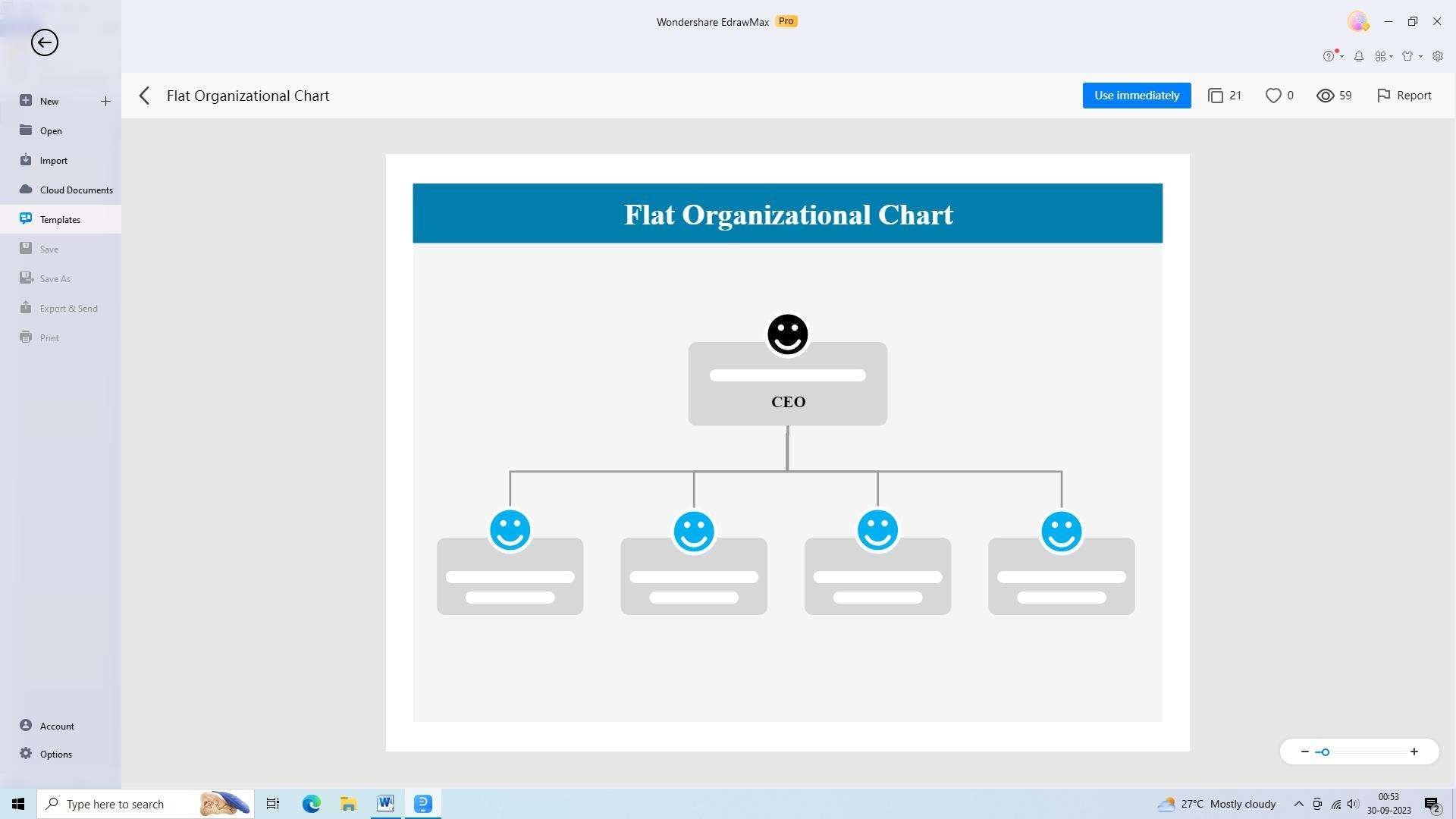
Part 2. How Does a Flat Organizational Structure Work?
A flat organizational chart fears the authority, control, and reporting structure for staffs. In a flat structure, there are rare levels of management. Thus employees will report openly to higher-level managers. It usually means better autonomy and specialist for the worker. Discussed below are some points that illustrate how a flat organizational structure works:
- Fluid Communication
One of the primary functions of a flat structure organizational chart is to facilitate seamless communication channels. With reduced layers of management, employees have direct access to top-level executives, promoting transparency and fostering open dialogue.
- Empowerment and Autonomy
In a flat structure, employees are granted increased autonomy and decision-making authority. By granting them a greater sense of ownership and responsibility, this management approach can enhance employee engagement and motivation.
- Agile and Adaptable Operations
Flat organizational structures are often associated with agile and adaptable operations. As decision-making authority is distributed across the organization, changes can be implemented more rapidly, enabling the organization to respond quickly to emerging market trends.
Characteristics of Flat Organizational Structure
The characteristics of a flat organizational structure are discussed below:
- Fewer Hierarchical Levels
The most evident characteristic of a flat structure organizational chart is the reduction in hierarchical levels. Traditional pyramid-shaped management structures are replaced by a more horizontal arrangement, promoting a more egalitarian and collaborative work environment.
- Wide Span of Control
The concept of a wide span of control is integral to a flat organizational structure. This means that each manager oversees multiple employees directly, leading to reduced supervisory levels.
- Cross-Functional Teamwork
Collaboration and cross-functional work are pivotal features in a flat organizational chart. With fewer bureaucratic barriers, teams from different departments can collaborate and share their expertise to achieve common goals.
What are The Advantages of a Flat Organisational Structure?
Some of the main advantages of a flat organizational structure are discussed below:
- Encourages Collaboration
A flat organizational structure encourages more collaboration among employees. With no hierarchical structure, it is easier for employees to work together, brainstorm ideas, and provide feedback.
- Increased Motivation
A flat org chart often results in increased motivation among employees. Without a traditional hierarchy, employees are more likely to feel empowered and engaged in their work.
How to Ensure Your Flat Organizational Structure Stays Healthy?
To make sure your flat organizational structure stays healthy, follow the tips given below:
- Emphasize Transparency
Transparency serves as a cornerstone for a healthy flat structure organizational chart. Open and honest communication channels enable employees to trust leaders and foster an environment of collaboration.
- Do Not Skimp on People’s Operations
In a flat organizational structure, people are the most valuable asset. Adequate investment in people operations is essential to promote individual growth, satisfaction, and professional development.
- Prioritize Professionalism
Maintaining a professional work environment is crucial for the smooth functioning of a flat organizational chart. Respecting boundaries, maintaining confidentiality, and upholding ethical standards are fundamental principles that must be ingrained within the organizational culture.
- Set the Tone at the Onset
The success of a flat organizational structure largely relies on setting the right tone from the very beginning. Leaders should clearly articulate expectations, values, and goals during the hiring process and onboarding of new employees.
Part 3. Best Tools to Make Flat Organisational Structure
There are several tools out there that can help users in creating a flat org chart. These tools are innovative and overall very useful. Some of the most popular tools that can be used for creating flat organizational charts are below:
1. Wondershare EdrawMax
Wondershare EdrawMax is a powerful tool used for creating professional-looking organizational charts. It provides a wide range of templates and symbols to help users create visually appealing diagrams. It also offers a variety of features, such as drag-and-drop capability, automatic layout, and color customization.
Here are the steps to create a flat organizational chart using Wondershare EdrawMax:
Step 1: Choose a template
- EdrawMax offers a wide range of professionally designed templates for creating a flat structure organizational chart so you can quickly get started.
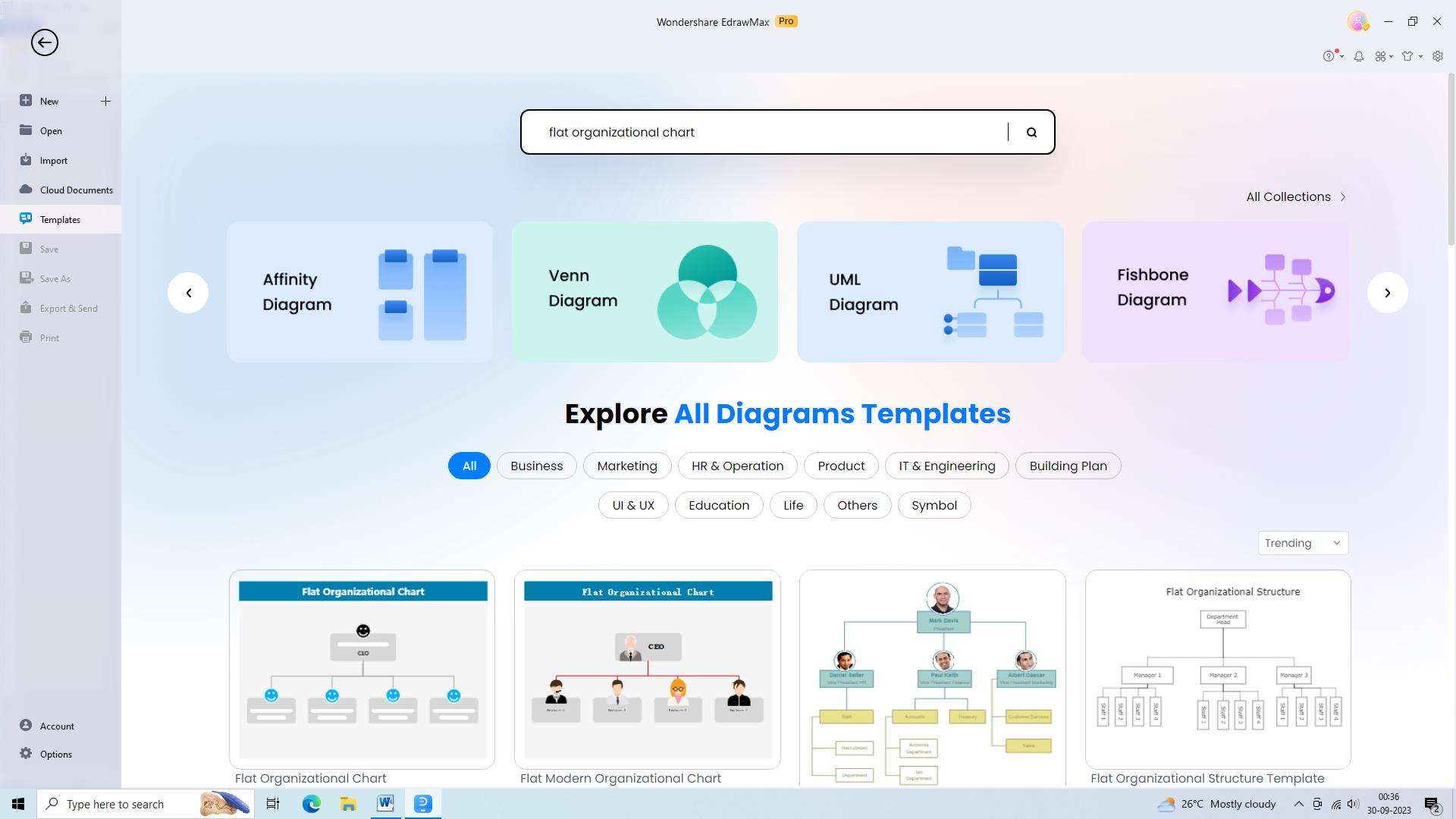
- All you need to do is select the template that best suits your needs and customize it to fit your organization’s structure.
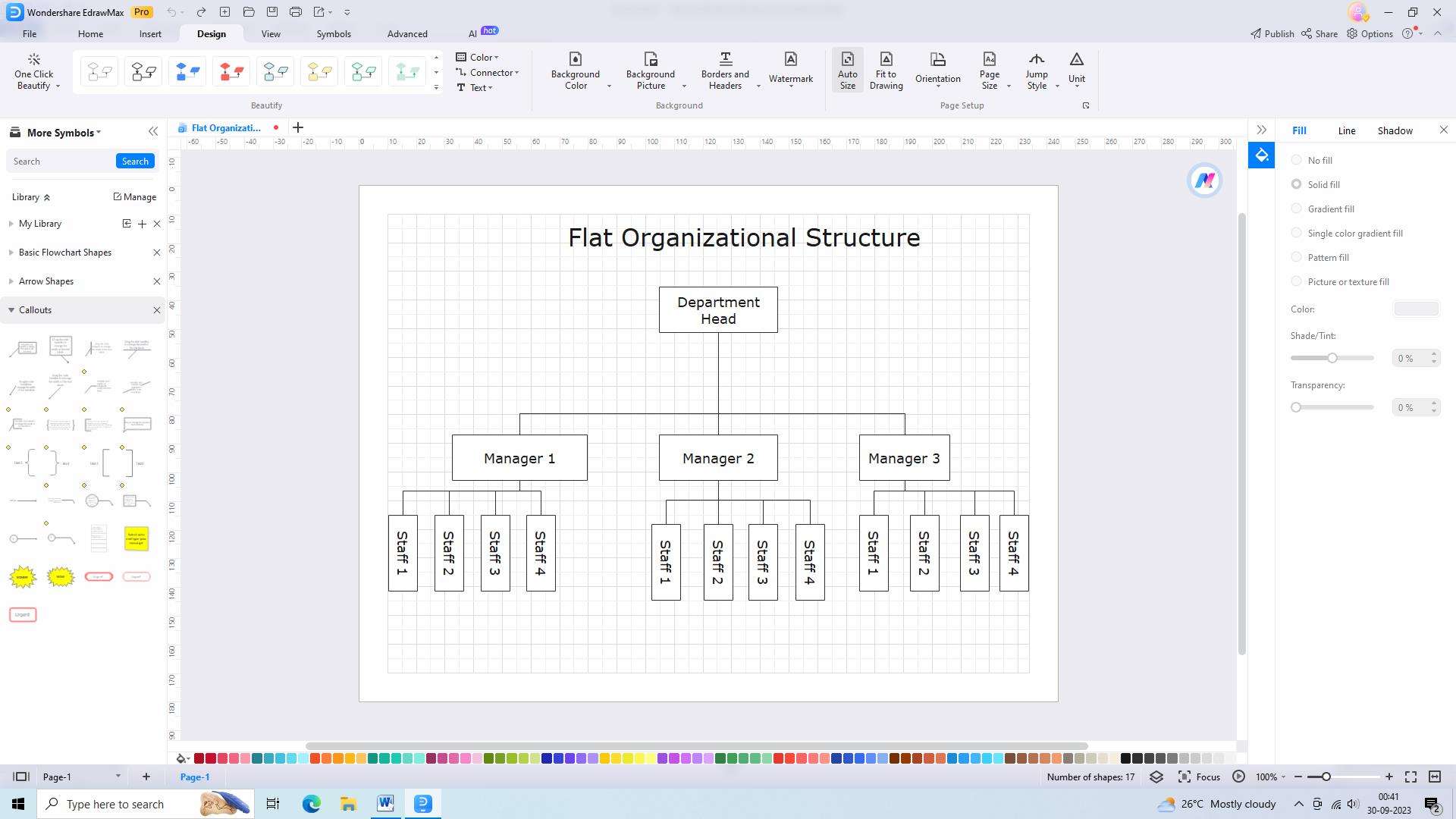
Step 2: Add information
- Once you’ve chosen a template, you can start adding information about your organization’s departments, roles, and team members.
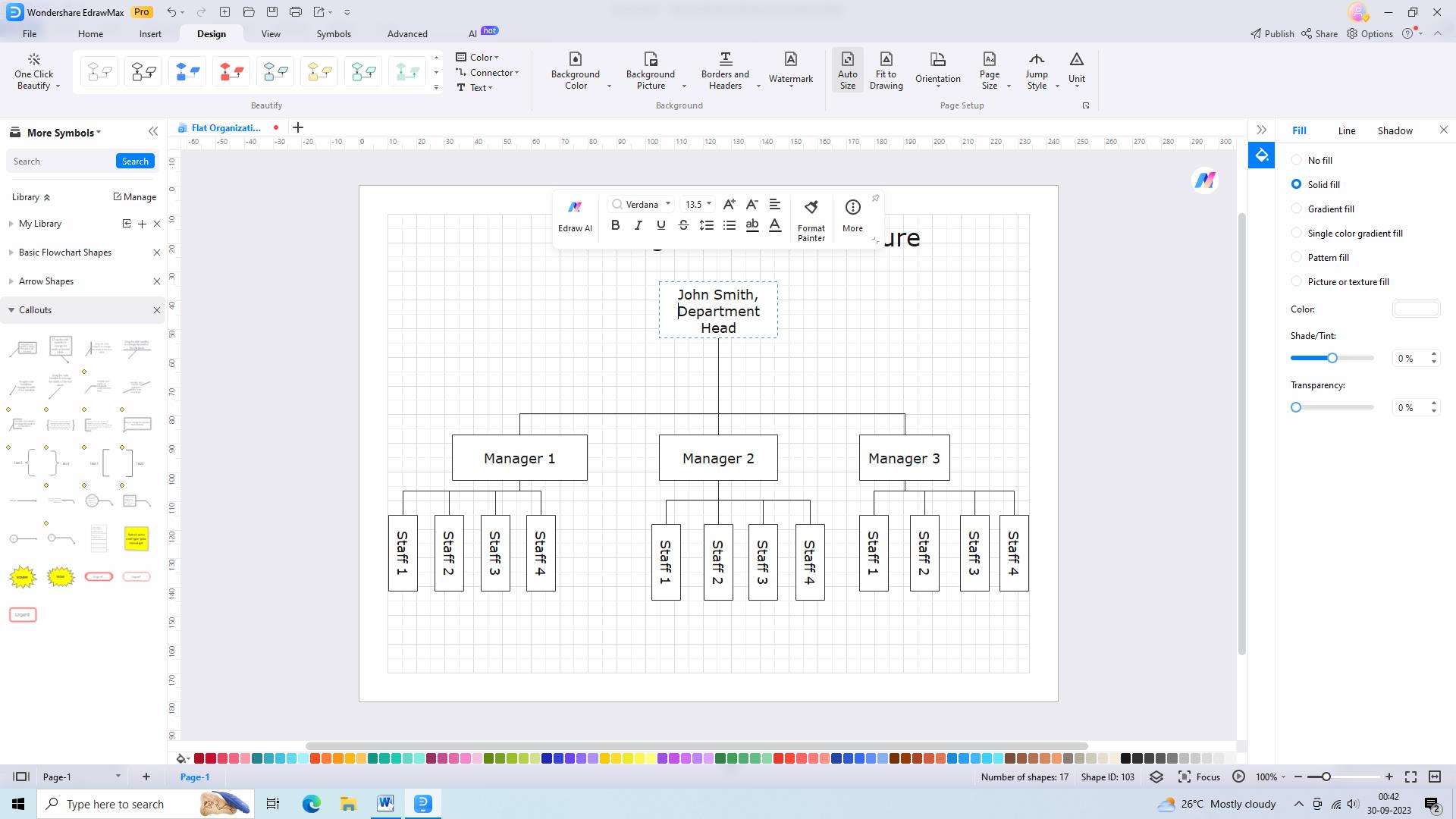
- You can add text, photos, and other visuals to make the chart look even more engaging and informative.
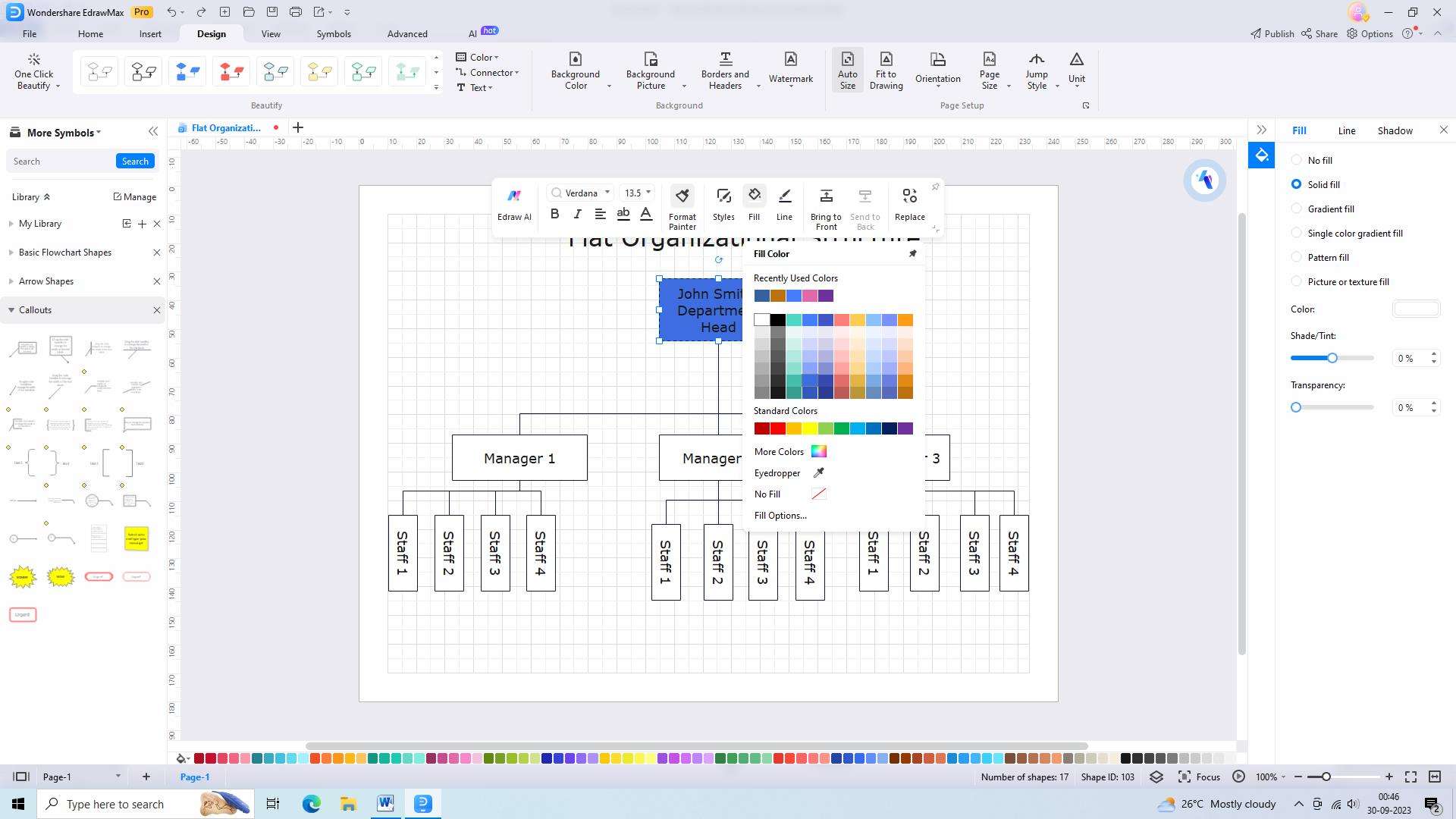
Step 3: Customize the look
- EdrawMax makes it easy to customize the look of your flat org chart to make it more visually appealing.
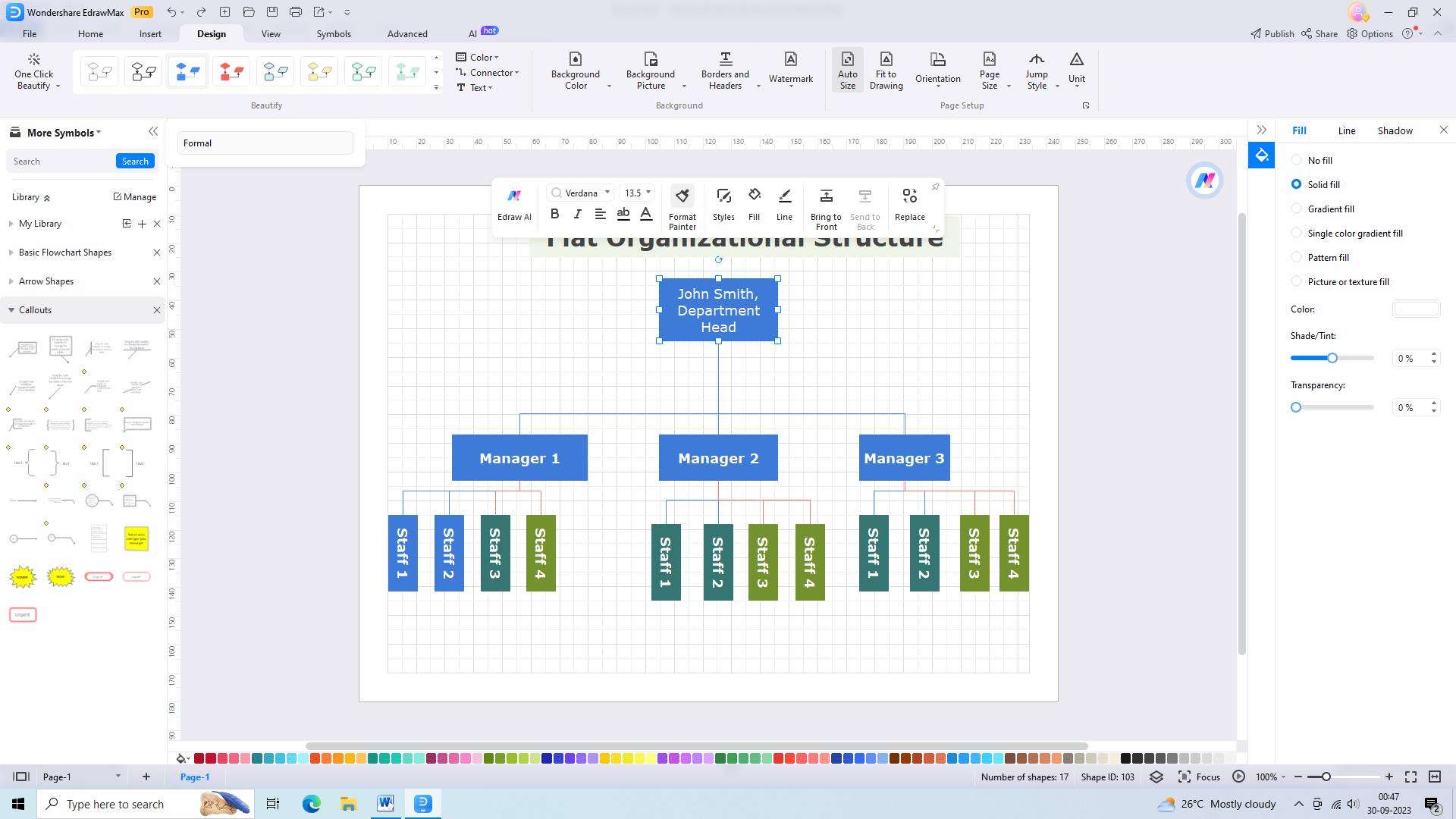
- You can change the color, font, and size of the elements, as well as add icons, symbols, and other design elements.
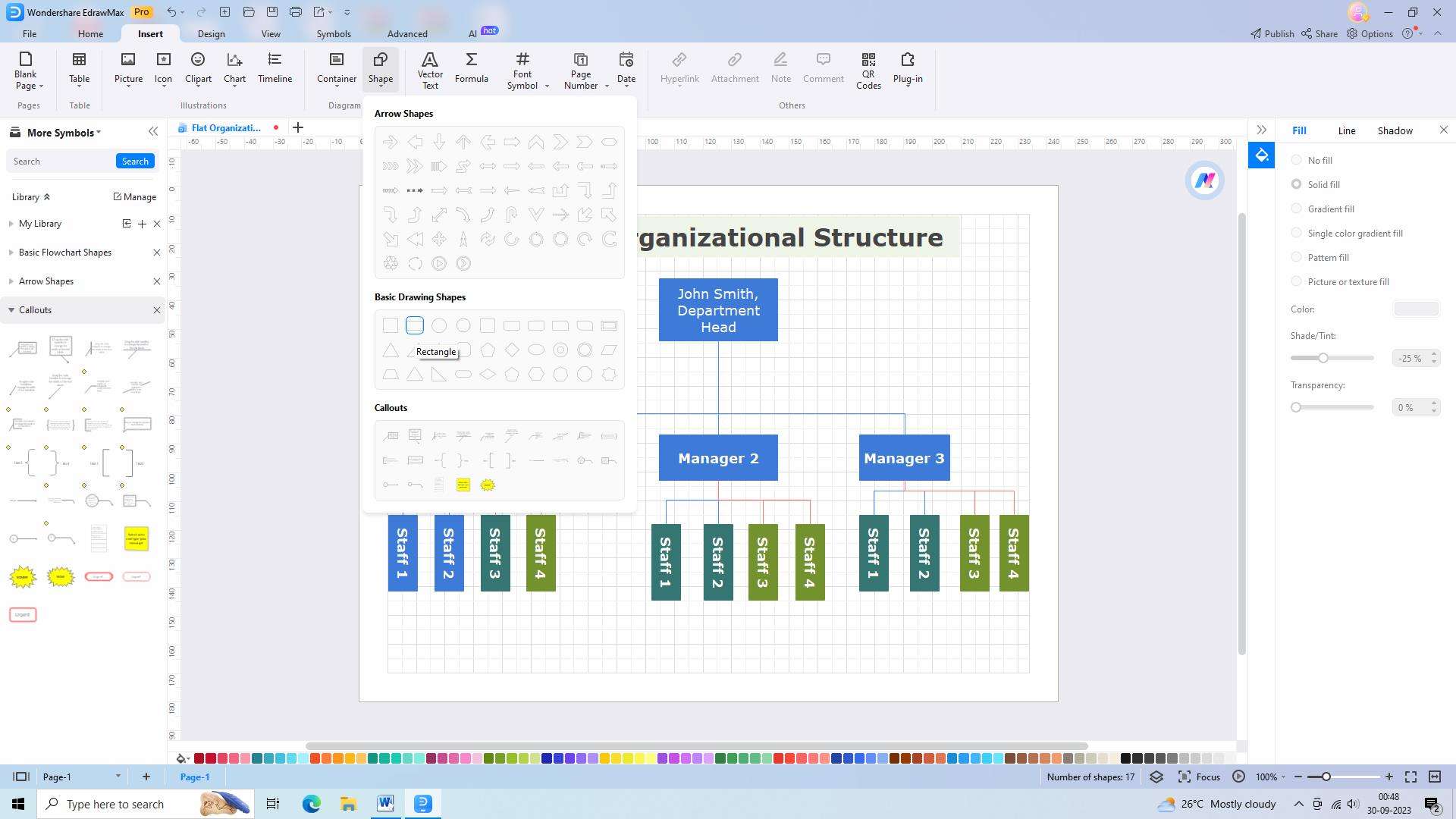
Step 4: Export and share
- Once you’re done creating your flat structure organizational chart, you can easily export it to a variety of formats, including PDF, PNG, and JPG.
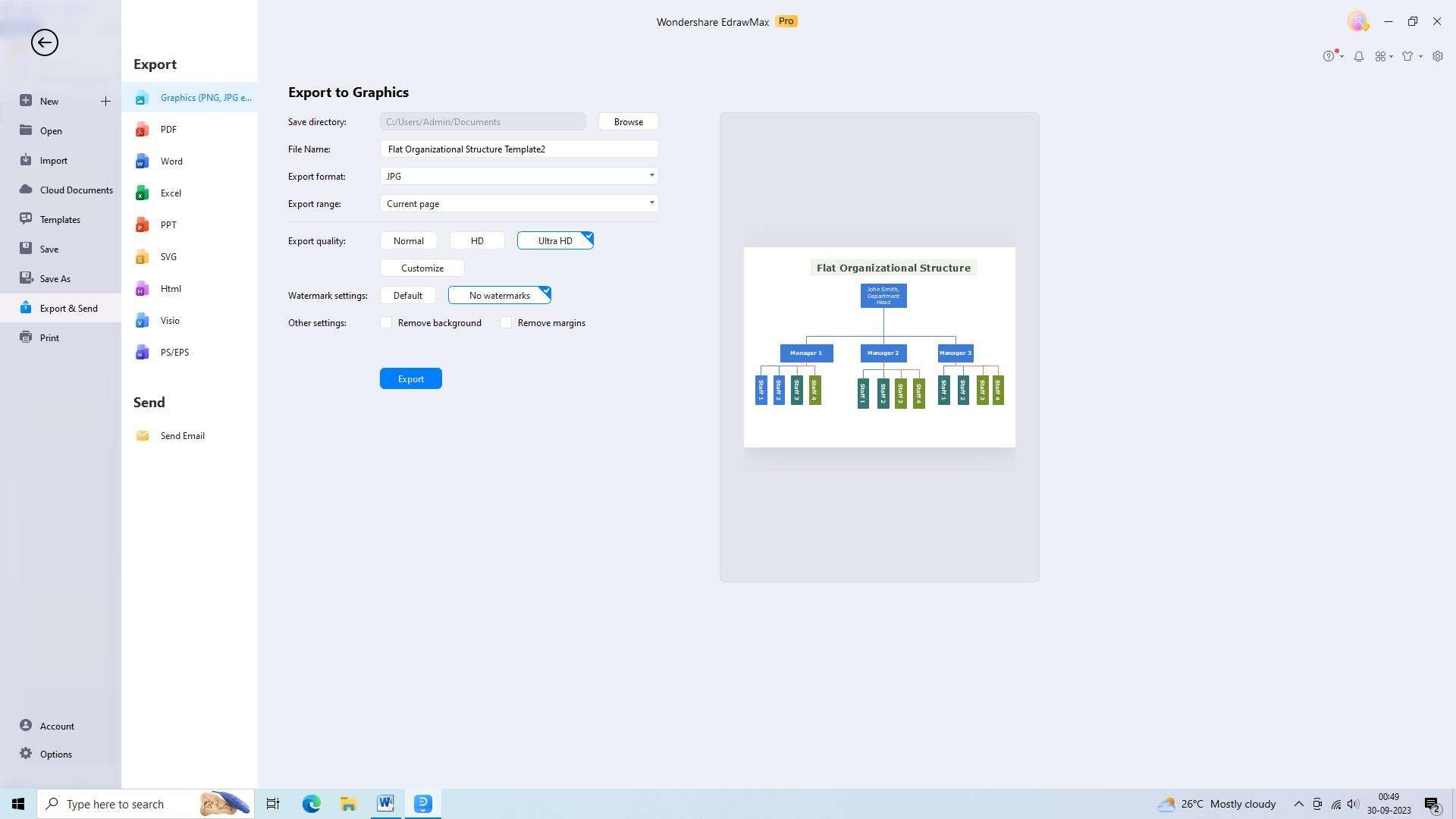
- You can also share the chart on social media or embed it on your website.
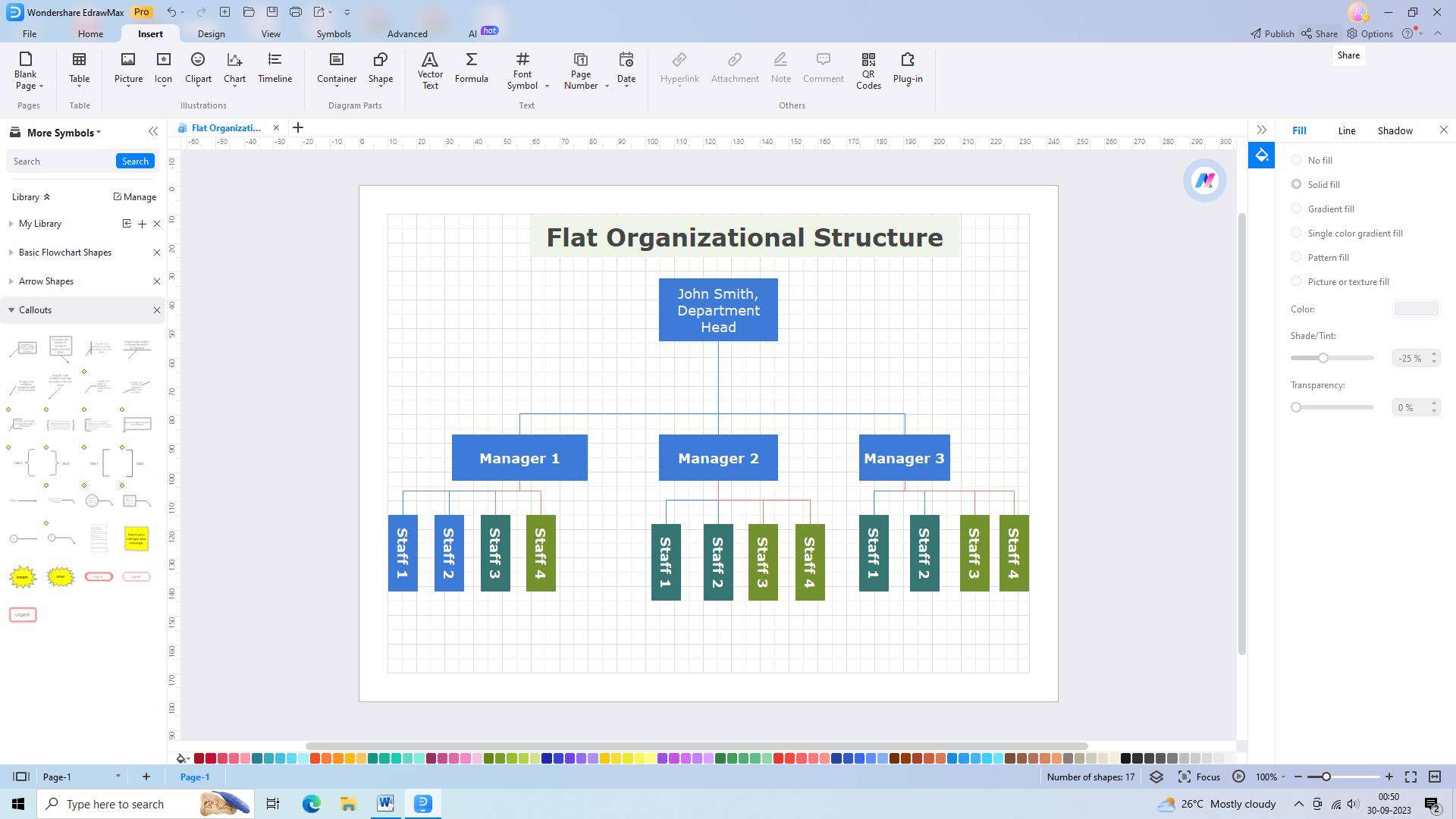
2. Creately
Creately is another feature-rich tool for making organizational charts. It allows users to collaborate in real time and build charts in a few clicks. It also provides a library of shapes, symbols, and icons to help users build complex diagrams quick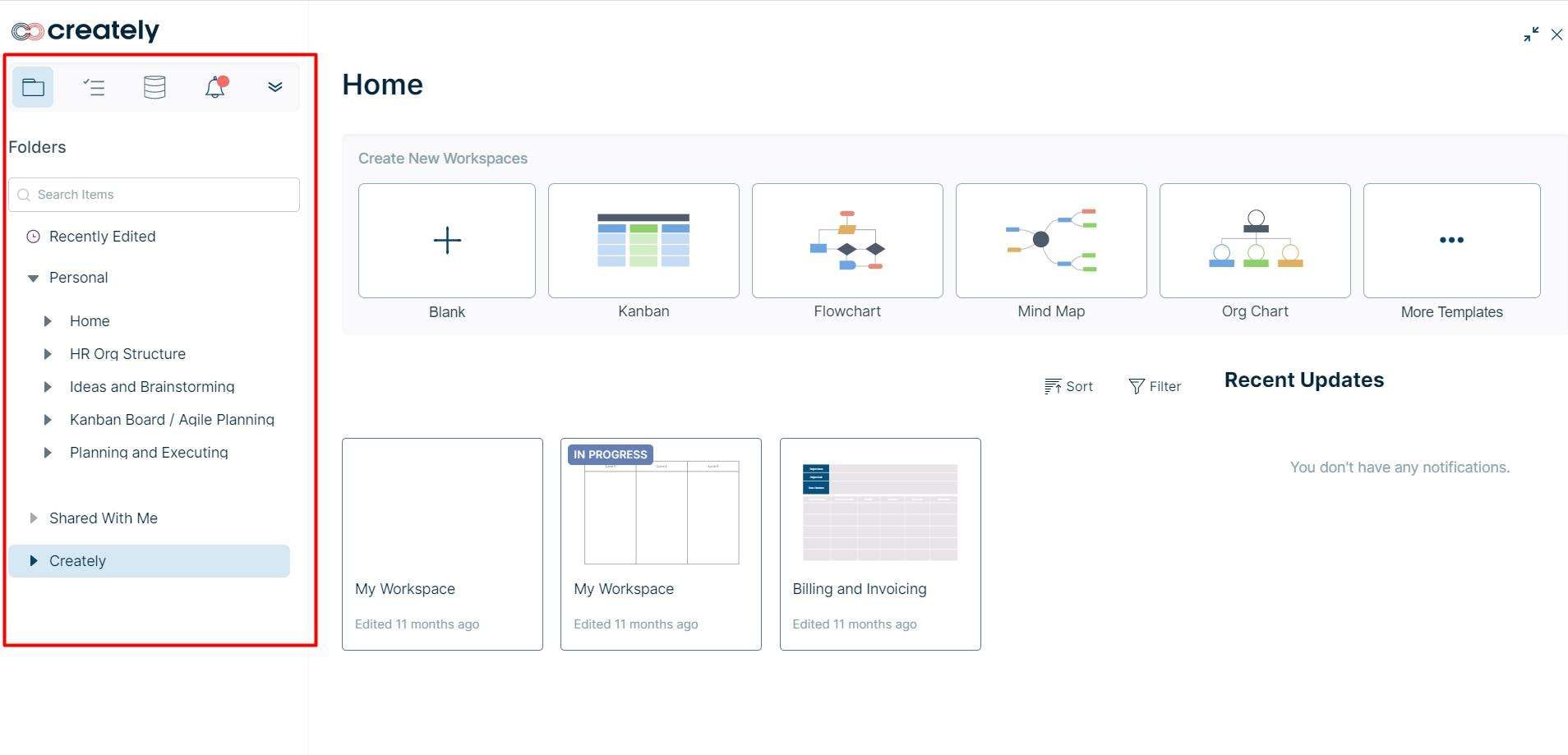
Features:
- Free trial available
- Collaborative editing
- Pre-made templates
- Easy to add and remove elements
Pros:
- Easy-to-use interface
- Intuitive drag-and-drop functionality
- Flexible for customization
- Cloud-based storage
Cons:
- Limited export options
- Fewer features compared to other tools
Compatibility: Windows, Mac, and Linux
3. Conceptdraw
ConceptDraw is an online diagramming tool that provides a wide range of tools and features to help users create professional-looking organizational charts. It also offers various templates and symbols for different types of charts. Additionally, users can share and collaborate on charts with other team members.
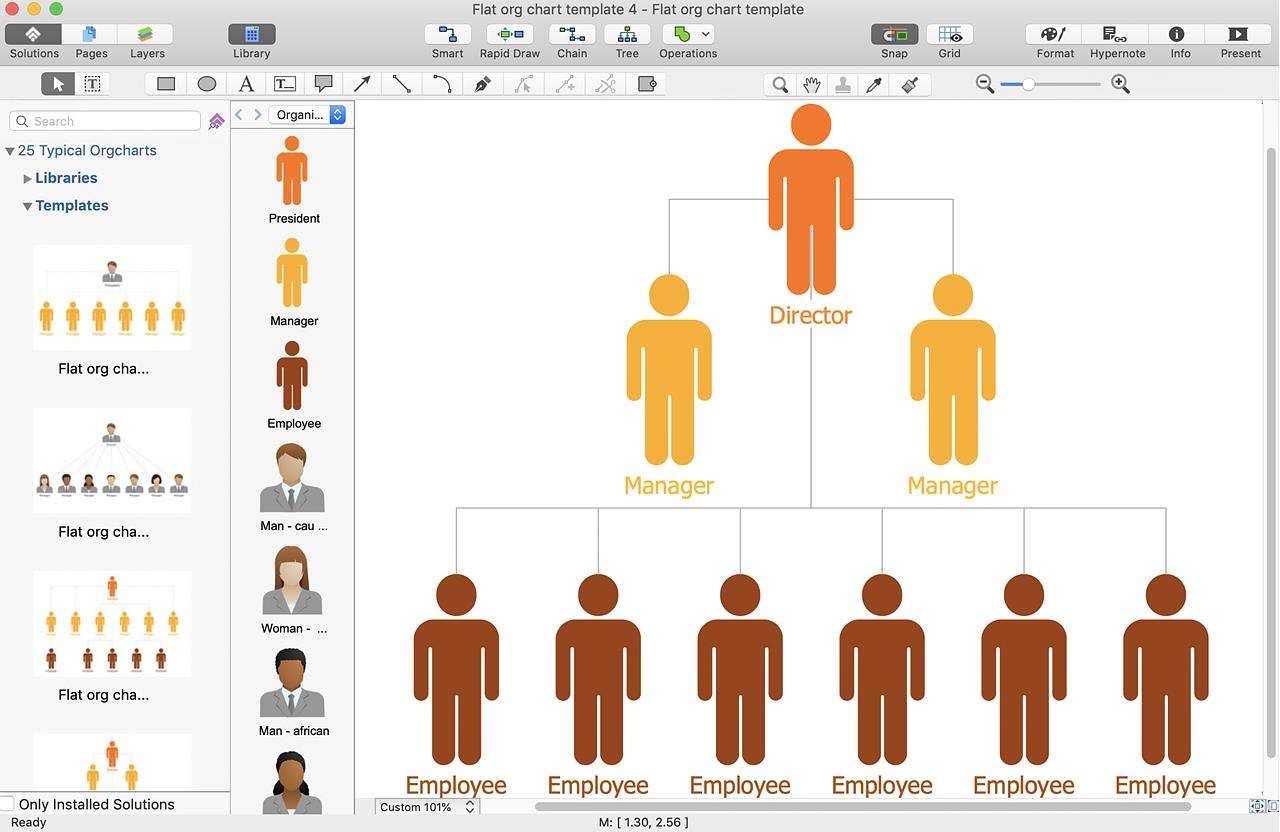
Features:
- Multiple export formats
- Powerful vector graphics editor
- Pre-made templates
- Ability to add notes and comments
Pros:
- Comprehensive library of graphics
- Wide range of customization options
- Easy to share and collaborate
- Affordable pricing plans
Cons:
- Interface is not user-friendly
- Limited support for non-commercial users
Compatibility: Windows and Mac
Conclusion
A flat organizational chart promotes seamless communication, employee empowerment, and agility. It fosters collaboration and motivation. To ensure its health, transparency, investment in people operations, professionalism, and setting the right tone are vital. By following these principles, organizations can create a productive and innovative work environment.




